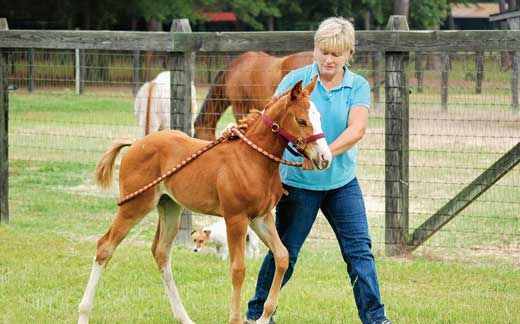I love long-lining! As much as I enjoy riding, it’s such a pleasure to watch my horses move, and long-lining allows that. Horses are so beautiful to watch!
Started youngsters that way, and come back to it now and then for the adults. I normally use a surcingle and two long lines meant for the purpose.
However, when I worked with Vitor Silva of Sons of the Wind in clinics, he used a much shorter cotton rope in place of long lines, enabling the person to be closer to the horse without having a lot of excess line in the hands. I made up my own version of that, and use it occasionally.
It’s a very useful skill, and comes in handy, not just for introducing new skills. When I would take a young horse out someplace with lots of distractions, assuming that there was an appropriate space (not in an arena), I’d bring along my surcingle and lines to long-line first for a few minutes, before saddling up (I’ve never been much of a fan of lunging). Not to run the horse around, but to work on focus and dealing with hoopla, by doing something familiar and reassuring. With an older horse, it can also be used to help leg them up after a period of inactivity (health or weather related, for instance).
When I’ve participated in clinics, if the clinician is a known expert in long-lining, I’ve always asked that my session(s) concentrate on this area. Clinicians have seemed to welcome the opportunity to give a long-lining lesson – I guess it makes a change from one rider after another.



 You can also try a butt rope in the way people teach babies to lead to get him used to it.
You can also try a butt rope in the way people teach babies to lead to get him used to it.
 .
.